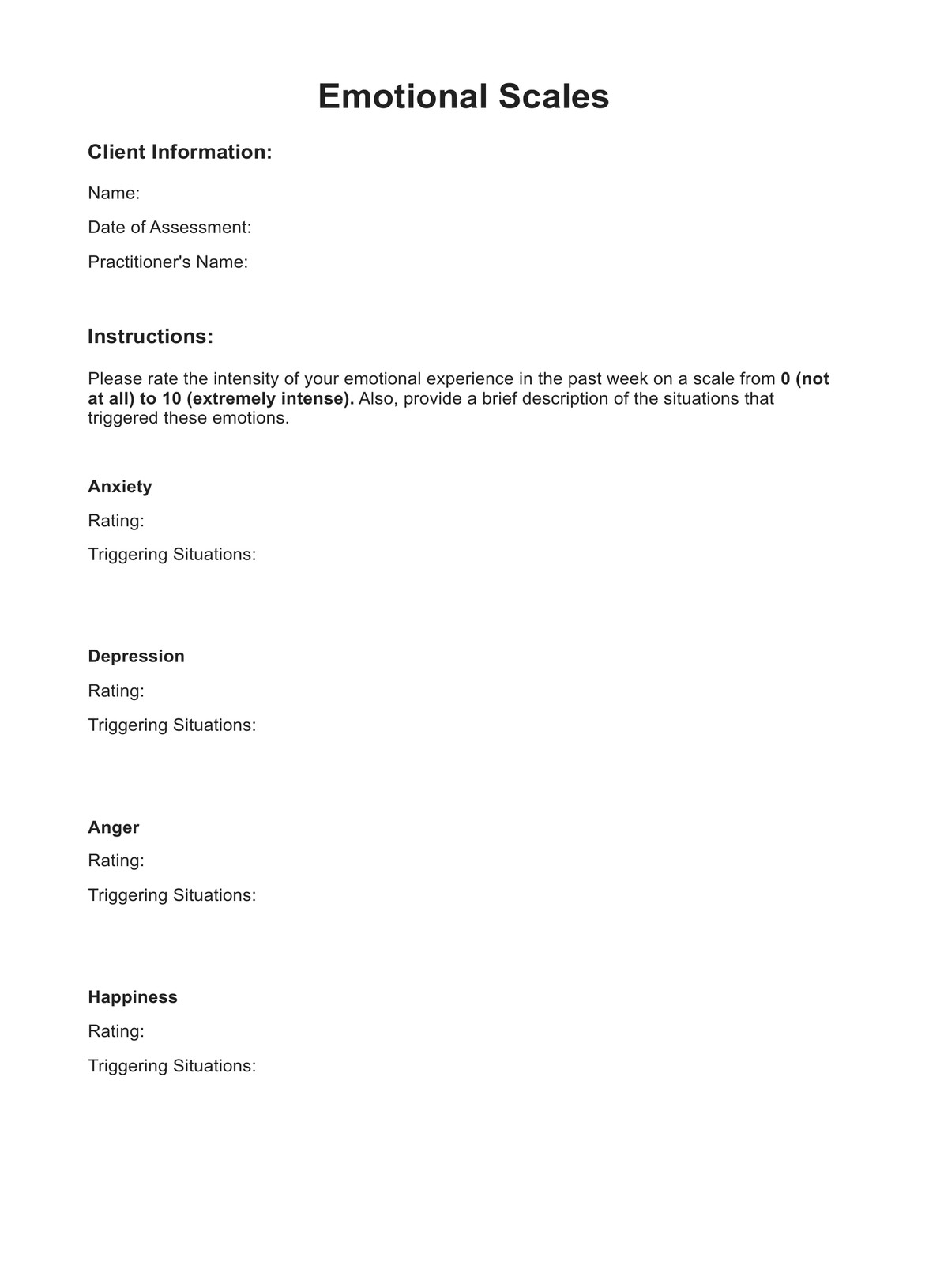The Emotional Scale is used by individuals seeking emotional awareness and growth. It is also employed by therapists, counselors, coaches, and educators to support their clients or students in understanding and managing their emotions.

Emotional Scale
Discover Emotional Scales: Understand emotions, nurture awareness, and promote growth. Enhance your client's well-being with this powerful tool.
Emotional Scale Template
Commonly asked questions
The Emotional Scale is used in various situations, including personal development, therapy, counseling, stress management, relationship building, and decision-making. It can be beneficial during challenging times or when seeking emotional balance and well-being.
To use the Emotional Scale, individuals assess their current emotional state, locate the corresponding emotion on the scale (ranging from lower to higher vibrational emotions), and aim to shift toward more positive emotions. It involves self-reflection, emotional regulation techniques, and monitoring progress over time. Practitioners use it to facilitate discussions, set goals, and guide clients' emotional growth.
EHR and practice management software
Get started for free
*No credit card required
Free
$0/usd
Unlimited clients
Telehealth
1GB of storage
Client portal text
Automated billing and online payments











